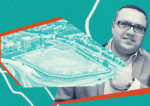Trending
Sunnyside yardage
The facts and figures on the city’s plan to build a massive affordable housing complex on top of an active Queens rail yard
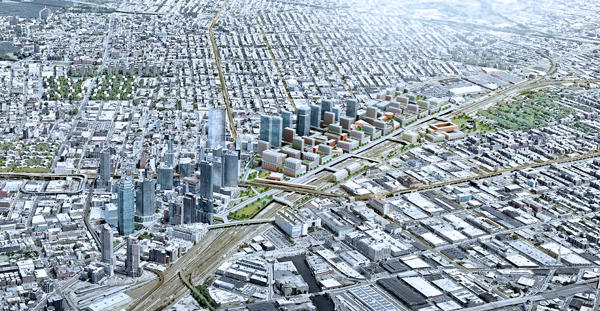
Real estate insiders like to cite the well-known axiom about the value of land: “They’re not making any more of it.” But that’s essentially what the de Blasio administration and Amtrak aim to do in western Queens by building on top of an active rail yard to create a 115-acre affordable housing development the likes of which the city hasn’t seen in nearly 50 years.
In early March, the city unveiled a master plan to cover Sunnyside Yard and build a whole community, including 12,000 units of housing, plus office and commercial space, schools, libraries and green space, all atop a $14.4 billion deck to be constructed over the still-active rail yard. The total cost of the project is not yet known, but the estimated $6 billion hit the city expects from the coronavirus outbreak could significantly delay or reduce the planned funding for the project.
The vast deck will dwarf the similar platform that was built over Hudson Yards to create the eponymous development on the west side of Manhattan, which is less than a quarter the size of what’s planned in Queens. And it will accommodate the city’s largest affordable housing development since the 1973 completion of Co-op City in the Bronx, which has 15,372 apartments spread across 35 high-rises and seven townhouse clusters.
The Sunnyside Yard project is intended to help address the city’s pressing need for affordable housing in both the rental and sales markets. Under this plan, half of the 12,000 units will be rentals for families meeting certain income requirements and the remaining 6,000 units will be for sale. Both renters and homeowners face affordability problems in the city, with roughly 22 percent of each paying more than half of their income on housing costs.
$9B
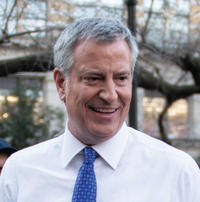 The amount of money Mayor Bill de Blasio hopes to devote to the project through 2029. Significant amounts of public funds are needed to construct affordable housing at scale in weaker markets, and while de Blasio allocated $5.9 billion through September 2019, his successor may not honor additional commitments after his term is up on Dec. 31, 2021.
The amount of money Mayor Bill de Blasio hopes to devote to the project through 2029. Significant amounts of public funds are needed to construct affordable housing at scale in weaker markets, and while de Blasio allocated $5.9 billion through September 2019, his successor may not honor additional commitments after his term is up on Dec. 31, 2021.
5M sq. ft.
The amount of commercial space for office, retail and industrial uses included in the plan. This creates the potential for an estimated 6,000 new jobs in the metropolitan area when the development is finished.
197,000
The number of new housing units the city added between 2009 and 2018. But this has not been enough to keep pace with job growth over the same period, which amounted to more than 900,000 new private sector jobs.
$96,100
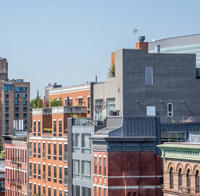 The Area Median Income for a family of three in New York City. About 3,000 of the rental units will be available to families earning 50 percent or less of the city’s AMI, or about $48,000 per year for a family of three in 2019, while the other 3,000 will be for families earning less than 30 percent of AMI, or about $29,000.
The Area Median Income for a family of three in New York City. About 3,000 of the rental units will be available to families earning 50 percent or less of the city’s AMI, or about $48,000 per year for a family of three in 2019, while the other 3,000 will be for families earning less than 30 percent of AMI, or about $29,000.
592
The number of applicants for each unit in the city’s affordable housing lottery in 2018. There were about 4.6 million applicants vying for 7,857 affordable homes. The lottery was open to residents who earned less than $120,615 for a single person or $199,650 for a family of six.
$2,152
The median rent for a one-bedroom apartment in New York City as of February 2020, according to Apartment List — more than twice the national average of $963. Out of roughly 5.4 million renters in the city, 44 percent pay at least 30 percent of their income in rent, according to the city’s Housing and Vacancy Survey.
780
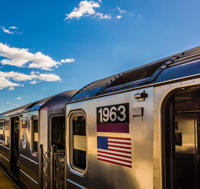 The number of trains that run through Sunnyside Yard every day via Amtrak and LIRR routes, but this number is expected to increase after the completion of the MTA’s East Side Access and Penn Access projects. The plan includes a new regional rail station for LIRR and Metro-North, plus a new subway station at the site.
The number of trains that run through Sunnyside Yard every day via Amtrak and LIRR routes, but this number is expected to increase after the completion of the MTA’s East Side Access and Penn Access projects. The plan includes a new regional rail station for LIRR and Metro-North, plus a new subway station at the site.
33%
The homeownership rate in New York City as of 2018, according to data from the Home Mortgage Disclosure Act. Homeowners in the city also face affordability issues, as over 40 percent of homeowners spend more than 30 percent of their income on housing costs, including mortgage payments.




